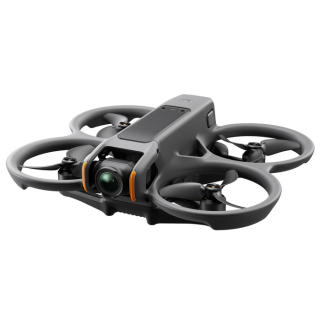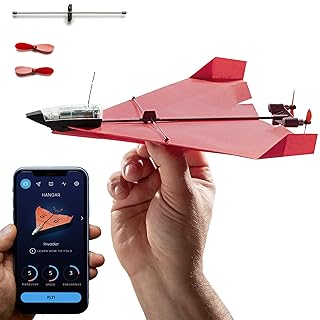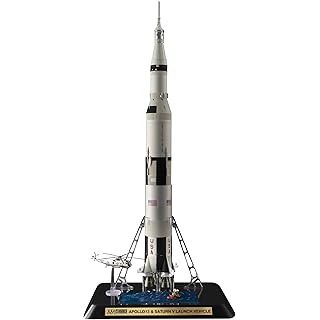 How to install EdgeTX Companion
How to install EdgeTX Companion
Here, we will show you how to install EdgeTX Companion on your Windows PC.
With EdgeTX Companion, you can upgrade firmware of radio, make a backup, and create a model.
Usage is almost the same as
OpenTX Companion
.
Check compatibility of your radio

Download EdgeTX Companion
 Open
EdgeTX Firmware Release page
on GitHub or
EdgeTX Latest Firmware Release page
and select the version you want to install.
Open
EdgeTX Firmware Release page
on GitHub or
EdgeTX Latest Firmware Release page
and select the version you want to install.
There is also a version called Nightly, but since this is a Nightly build, a so-called beta version, it may be unstable or contain bugs. This version is for developers, so please do not use it for general users.
There is also a version with "-RC1" or "-RC2" added to the end of the version name, which is the Release Candidate version. As with Nightly, it may contain bugs, so general users should avoid using it as much as possible.
 If you scroll the release page screen and click the part written as "Assets", you will see a list of links to companion software for each OS of your computer and firmware binary files.
Download the Zip file named "edgetx-cpn- [OS name] -v [version number] .zip".
For 64-bit Windows, click the link that says "edgetx-cpn-win64-v [version number] .zip".
If you scroll the release page screen and click the part written as "Assets", you will see a list of links to companion software for each OS of your computer and firmware binary files.
Download the Zip file named "edgetx-cpn- [OS name] -v [version number] .zip".
For 64-bit Windows, click the link that says "edgetx-cpn-win64-v [version number] .zip".
Right-click on the link and download it to your computer. Unzip this in any folder. Then installer with the file name "companion-windows-2.9.2.exe" will be expanded.
Install EdgeTX Companion
 When you double-click the downloaded EdgeTX Companion installation program, a screen like this will appear.
Click "More information".
When you double-click the downloaded EdgeTX Companion installation program, a screen like this will appear.
Click "More information".
 Next, click “Execute” to start installation.
Next, click “Execute” to start installation.
Attention: Never run an untrusted exe file. Do not run programs other than those downloaded directly from github.com/EdgeTX/edgetx/releases/. Otherwise, there may be viruses.
 First screen is grant of the software license agreement.
Click "I Agree".
First screen is grant of the software license agreement.
Click "I Agree".
 Next is confirmation screen of modules to be installed.
Click "Next".
Next is confirmation screen of modules to be installed.
Click "Next".
 Then select the installation folder.
You won't need to change anything.
Click "Next".
Then select the installation folder.
You won't need to change anything.
Click "Next".
By default, it will be installed in the folder with version number. This allows multiple versions of EdgeTX Companion to co-exist on a single computer.
 Next is the specification of registration to the start menu.
Again, you won't need to change it.
Click "Next".
Next is the specification of registration to the start menu.
Again, you won't need to change it.
Click "Next".
 Next, select whether to use this software for all users registered on the computer or only for the currently logged-in user.
Please select as you like.
Click "Install".
Next, select whether to use this software for all users registered on the computer or only for the currently logged-in user.
Please select as you like.
Click "Install".
 Then installation will start.
Installation will be completed in a few seconds.
Click "Next".
Then installation will start.
Installation will be completed in a few seconds.
Click "Next".
 When you see a screen like this, the installation is complete.
Click "Finish".
When you see a screen like this, the installation is complete.
Click "Finish".
 EdgeTX Companion will start. First you will see a dialog box like this.
It is a message recommending such as
EdgeTX Companion will start. First you will see a dialog box like this.
It is a message recommending such as
-Set the radio first.
-Review the build options on the radio settings screen.
-Download the latest radio firmware.
 Next, radio setting screen will appear.
Next, radio setting screen will appear.
This screen can be called at any time by selecting [Settings]-[Settings] from EdgeTX Companion menu.
If you purchase a new radio, you can register it by selecting [Settings]-[Radio Profiles]-[Add Radio Profile].
 In "Radio Type" drop-down list, select your radio model.
In "Radio Type" drop-down list, select your radio model.
In the "Options" field, you can select whether to enable or disable various functions of the radio. This list of features will change depending on selected radio model. Hover your mouse cursor over each item name to see details of the function.
I think you should select "lua (enable Lua custom script screen)" and "internalmulti (support for internal 4IN1 MULTI-Module)". Select "internalELRS" for radios with a built-in ExpressLRS(ELRS) transmitter.
If you specify "SD Structure path" field, you can generate SD card image here when you upgrade the radio . It is convenient to create a folder such as "[Radio name]/sdimage" under any folder, copy the contents of Radio's SD card, and specify that folder here.
In "Default Int. Module" field, specify the type of built-in transmitter with radio. Select "MULTI" if you have a built-in 4in1 multi-protocol module, or select "CRSF" if you have a built-in Express LRS (ELRS).
Select "Default Stick Mode" and "Default Channel Order" according to your radio settings.
If you check "Append version number to firmware file name", it will be easier to distinguish the version of the downloaded file.
Finally, click "OK".
Install the driver : STM32 BOOTLOADER
To access the firmware of FPV drones and OpenTX/EdgeTX radios using STM32 processors on Windows PC, it is necessary to install a driver called "STM32 BOOTLOADER". Normally this driver is not installed automatically and must be installed manually. See below for details.Access to radio: backup Flash memory and EEPROM
Radio that uses OpenTX/EdgeTX has a "Flash memory" that stores firmware and boot loader, and an "EEPROM (Electrically Erasable Programmable Read-Only Memory) that stores model information and various setting information inside.As a starting point, let's back up the initial firmware and EEPROM installed in the radio to your computer.
 Boot the radio in DFU/Bootloader Mode.
Hold down left and right horizontal trim buttons inward and press power button.
When screen becomes bright, release trim buttons and you will see a screen like this.
Boot the radio in DFU/Bootloader Mode.
Hold down left and right horizontal trim buttons inward and press power button.
When screen becomes bright, release trim buttons and you will see a screen like this.
Then connect the radio to your computer with a USB cable and wait for a while.
 Radio screen looks like this.
Radio screen looks like this.
 Then, after waiting for a while (about 20-30 seconds), two drives, "ESD-USB" or "USB drive", and "Taranis" or "(your radio name)" will be mounted in Explorer on your computer.
Then, after waiting for a while (about 20-30 seconds), two drives, "ESD-USB" or "USB drive", and "Taranis" or "(your radio name)" will be mounted in Explorer on your computer.
(For EdgeTX, only "USB drive")
Now you are ready to access the radio.
 First, back up contents of EEPROM.
Select [Read/Write]-[Backup Radio to File] from the OpenTX Companion menu.
First, back up contents of EEPROM.
Select [Read/Write]-[Backup Radio to File] from the OpenTX Companion menu.
 Then folder selection dialog is displayed, so specify the folder and its file name where you want to save.
Then backup will be completed in a few seconds.
Then folder selection dialog is displayed, so specify the folder and its file name where you want to save.
Then backup will be completed in a few seconds.
This backup file can be written back to the radio by [Write Backup to Radio] menu.
 Next, try backing up firmware.
Select [Read/Write]-[Read Firmware from Radio] from the menu.
Next, try backing up firmware.
Select [Read/Write]-[Read Firmware from Radio] from the menu.
 Then folder selection dialog is displayed, so specify the folder and its file name where you want to save.
Then folder selection dialog is displayed, so specify the folder and its file name where you want to save.
 Then backup will be completed in a few seconds.
Then backup will be completed in a few seconds.
Precautions when removing radio from computer
 When radio is connected to PC in DFU/Bootloader Mode, memory of the radio is visible as a USB memory.
When removing radio from PC, perform "Eject" operation of two drives, "ESD-USB" or "USB drive", and "Taranis" or "(your radio name)", and then remove it, in the same way as when removing USB memory.
When radio is connected to PC in DFU/Bootloader Mode, memory of the radio is visible as a USB memory.
When removing radio from PC, perform "Eject" operation of two drives, "ESD-USB" or "USB drive", and "Taranis" or "(your radio name)", and then remove it, in the same way as when removing USB memory.
Upgrade EdgeTX Companion
 EdgeTX Companion does not yet support online version upgrades.
As with the new installation, download installation module from
EdgeTX Latest Firmware Release page
and perform an overwrite installation.
EdgeTX Companion does not yet support online version upgrades.
As with the new installation, download installation module from
EdgeTX Latest Firmware Release page
and perform an overwrite installation.

















